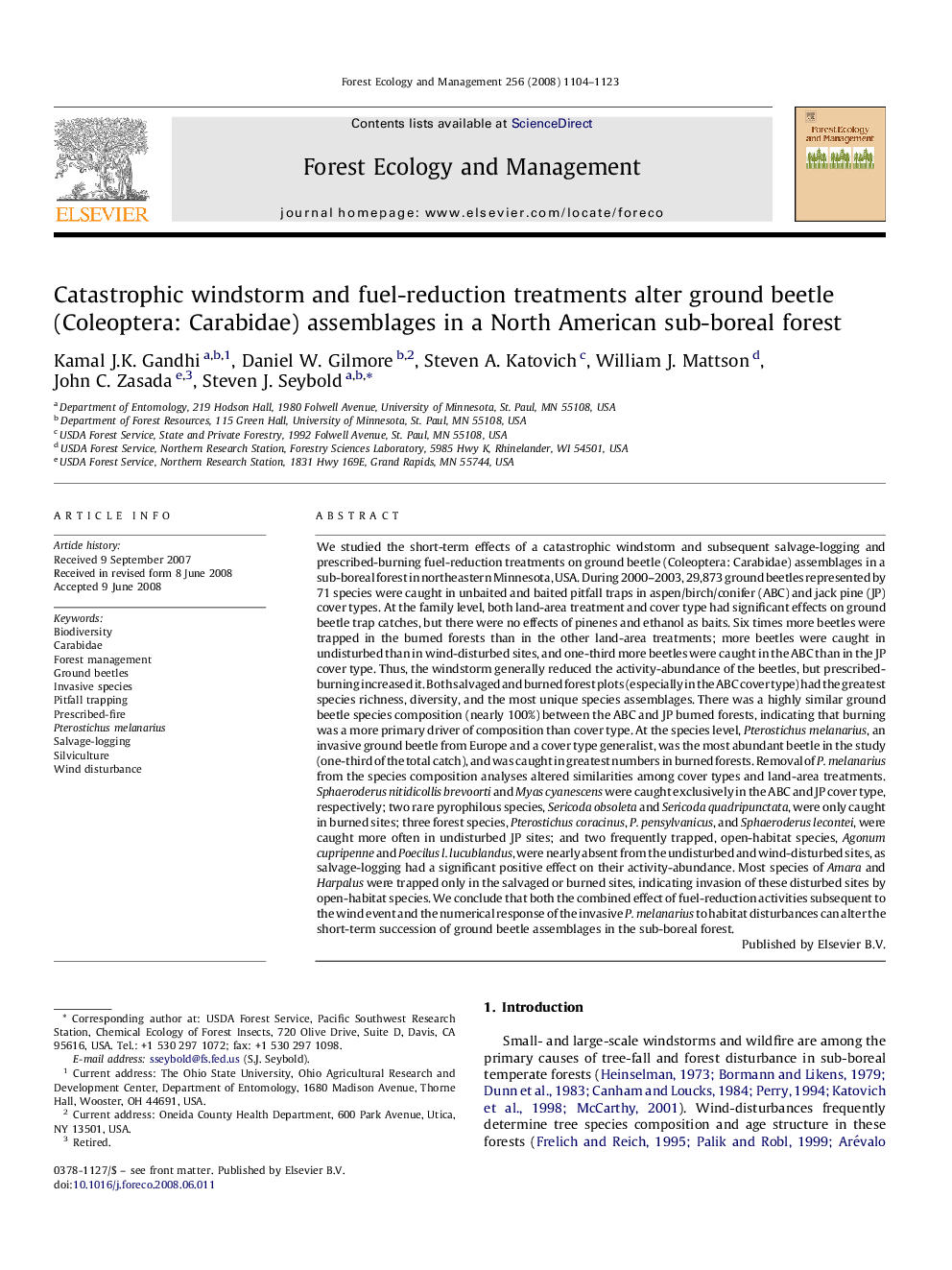| Article ID | Journal | Published Year | Pages | File Type |
|---|---|---|---|---|
| 88801 | Forest Ecology and Management | 2008 | 20 Pages |
We studied the short-term effects of a catastrophic windstorm and subsequent salvage-logging and prescribed-burning fuel-reduction treatments on ground beetle (Coleoptera: Carabidae) assemblages in a sub-boreal forest in northeastern Minnesota, USA. During 2000–2003, 29,873 ground beetles represented by 71 species were caught in unbaited and baited pitfall traps in aspen/birch/conifer (ABC) and jack pine (JP) cover types. At the family level, both land-area treatment and cover type had significant effects on ground beetle trap catches, but there were no effects of pinenes and ethanol as baits. Six times more beetles were trapped in the burned forests than in the other land-area treatments; more beetles were caught in undisturbed than in wind-disturbed sites, and one-third more beetles were caught in the ABC than in the JP cover type. Thus, the windstorm generally reduced the activity-abundance of the beetles, but prescribed-burning increased it. Both salvaged and burned forest plots (especially in the ABC cover type) had the greatest species richness, diversity, and the most unique species assemblages. There was a highly similar ground beetle species composition (nearly 100%) between the ABC and JP burned forests, indicating that burning was a more primary driver of composition than cover type. At the species level, Pterostichus melanarius, an invasive ground beetle from Europe and a cover type generalist, was the most abundant beetle in the study (one-third of the total catch), and was caught in greatest numbers in burned forests. Removal of P. melanarius from the species composition analyses altered similarities among cover types and land-area treatments. Sphaeroderus nitidicollis brevoorti and Myas cyanescens were caught exclusively in the ABC and JP cover type, respectively; two rare pyrophilous species, Sericoda obsoleta and Sericoda quadripunctata, were only caught in burned sites; three forest species, Pterostichus coracinus, P. pensylvanicus, and Sphaeroderus lecontei, were caught more often in undisturbed JP sites; and two frequently trapped, open-habitat species, Agonum cupripenne and Poecilus l. lucublandus, were nearly absent from the undisturbed and wind-disturbed sites, as salvage-logging had a significant positive effect on their activity-abundance. Most species of Amara and Harpalus were trapped only in the salvaged or burned sites, indicating invasion of these disturbed sites by open-habitat species. We conclude that both the combined effect of fuel-reduction activities subsequent to the wind event and the numerical response of the invasive P. melanarius to habitat disturbances can alter the short-term succession of ground beetle assemblages in the sub-boreal forest.
